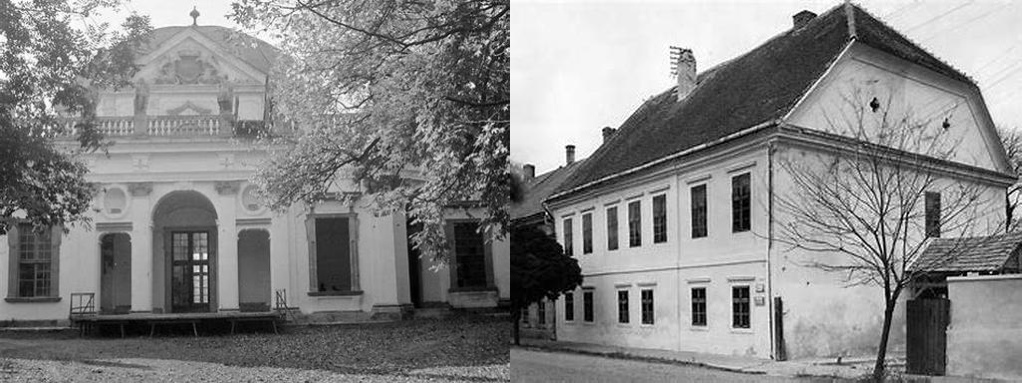
Lóczy-kúria, or the Lóczy Mansion, sits quietly in the modest yet charming village of Ónod, an unassuming settlement in Hungary’s Borsod-Abaúj-Zemplén county. Unlike the grandiose castles that shout their history across vast estates, the Lóczy Mansion whispers it through lilac-scented gardens and chipped stone walls. It is a place less traveled by the crowds, a house with more stories than rooms, the kind of stopover that rewrites your sense of what rural Hungary has to offer.
At first glance, the mansion’s pale yellow walls and tree-framed facade might not command immediate awe. Yet, step through the arched portal and the sense of gentle time-travel is real. The mansion traces its roots to the 18th century. This alone would endear it to any history enthusiast, but Lóczy Mansion’s claim to fame runs deeper. It was, most notably, the childhood home of Lajos Lóczy—one of Hungary’s most respected geologists and explorers. His name often surfaces in connection with the great explorations of Central Asia and the mysteries of the Balaton Uplands, yet here it is, inscribed above doorframes and detailed in faded family portraits, grounded in Ónod’s soft hills.
What’s extraordinary is how accessible the past feels inside these rooms. The mansion, unlike some polished museumified landmarks, feels lived-in. Its creaking floors and wood-paneled ceilings lend an air of intimacy, as if the walls themselves wish to speak quietly to you. Local volunteers and occasional curators welcome visitors not with rehearsed scripts but with personal stories passed down by grandparents who remember the Lóczy family from their own youth. The result is less of a tour and more of a conversation, an immersion into the rhythms and secrets of Ónod, the kind you would never catch from a glossy brochure.
The story of Lajos Lóczy warrants lingering, even if geology was never your favorite subject in school. Born in 1849, he led daring expeditions alongside the likes of Count Béla Széchenyi, traversing rivers and mountain passes in faraway lands. But here, in Ónod’s mansion, his early fascination for rocks became the clay from which his scientific career was shaped. It’s not rare to see school groups tracing their fingers along geological maps or peering into antique cabinets filled with odd stones and mineral samples—each display thoughtfully arranged to invite curiosity rather than merely inform. For those who prefer literature to limestone, the small reading corner is a highlight, where battered leather-bound volumes invite visitors to leaf through Lóczy’s own works and correspondence.
Outside, the gardens wrap the mansion in a quiet embrace. Gnarled chestnut trees, likely as old as the mansion itself, offer shady spots for reflection—perfect for a picnic on a warm afternoon. Local folklore claims that some of the trees were planted by the Lóczy family. Whether fact or embroidery, it’s easy to imagine one of Hungary’s pioneering scientists daydreaming beneath such boughs, gathering inspiration for journeys far beyond the village borders. In spring, the garden erupts with fragrance and color, while autumn brings a mosaic of fallen leaves that crunch underfoot, lending the mansion a particularly photogenic air.
What makes a visit to Lóczy Mansion linger in memory long after you’ve left isn’t just the architecture or the exhibits. Ónod itself is a village where time meanders, not rushes—where small details (the pattern of laundry on a neighboring line, the echo of church bells across the fields) become vivid. After exploring the mansion, many visitors find themselves wandering down sleepy lanes, sampling homemade strudel from a local bakery, or venturing to the nearby ruins of the Ónod Castle. In this way, the mansion becomes both an anchor and a gateway: opening a window onto the personal histories of Hungary’s rural heartland.
No one leaves Lóczy-kúria with the feeling of having completed something, but rather with the sense of having joined an ongoing tale. The rooms and grounds feel like a gentle invitation—not to check off another attraction but to linger, listen, and imagine. Ónod might not feature on the cover of guidebooks, but here is an experience stitched from authenticity, history, and the hazy outlines of memory. For those willing to stray beyond the main highways and into the fold of Hungary’s countryside, Lóczy Mansion offers not just a slice of the past but a generous helping of reflection and calm.





